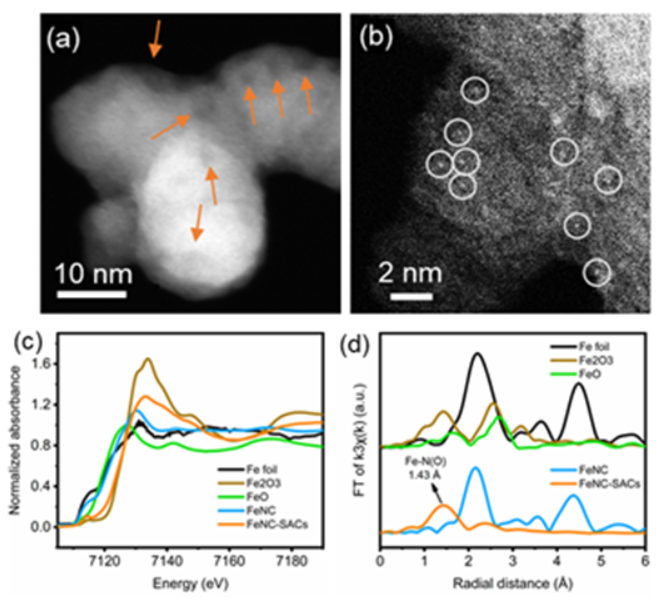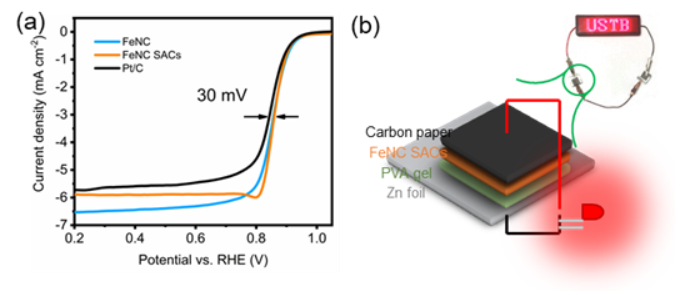Song Yujun team of University of Science and Technology Beijing has made new achievements on the sin
Because of its special structure, monatomic catalysts show significantly different activity, selectivity and stability from conventional nanocatalysts.The mass production of efficient, durable and inexpensive single-atom catalysts is a major challenge for the large-scale application of single-atom catalysts.Professor of Beijing university of science and technology institute of mathematical yu-jun song team recently with professor deng's idea of tianjin university, and Dr Argonne national laboratory Wu Tianpin cooperation developed a monatomic catalyst for the synthesis of simple generic strategy, the strategy is simple to use ultrasonic atomization and pyrolysis and calcining process, the combination of to the synthesis of large quantities of single atom FeNC catalyst (FeNC SAC).Research results in order to "Mass Production of High Performance Single Atomic FeNC Electrocatalysts via Sequenced Ultrasonic Atomization and Pyrolysis Process", published online in the journal SCIENCE CHINA Materials (JCR partition 1 zone of Chinese Academy of Sciences,In 2019, the impact factor was 6.098.Corresponding author is Professor Song Yujun from University of Science and Technology Beijing and first author is Doctoral candidate Ma Jugang.

Schematic diagram of preparation of FeNC SAC by ultrasonic atomization combined with pyrolysis and calcination
In this work, a variety of physical characterization methods, such as spherical electron microscopy, synchrotron radiation and Musbauer spectrum, were used to confirm the monatomic structure of iron: the monatomic Fe site of tetrapyridine N atom chelation.Through further acid leaching and calcination after pyrolysis, FeNC SAC formed a golf ball shape with a rough surface, providing greater contact area and more exposed active sites, which effectively enhanced the mass diffusion of the reactants..

Spherical aberration electron microscopy and synchrotron radiation characterization of FeNC SAC

Schematic diagram of ORR performance of FeNC SAC and application in zinc empty batteries
The electrochemical performance parameters of FeNC SAC, including positive half wave potential (E1/2=0.87 V) and dynamic current density (Jk=10.44 mVcm-2), were better than those of noble metal commercial Pt/C catalysts.Synthetic FeNC SAC demonstrated excellent methanol resistance and high ORR selectivity, indicating that they showed great potential in the cathode of direct methanol fuel cells.In particular, the long-term stability of FeNC SAC was enhanced by the calcination step.Finally, we used FeNC SAC as a cathode catalyst for zinc-air batteries, which have a larger capacity and longer discharge time than batteries manufactured using commercial Pt/C catalysts.More importantly, this synthesis strategy provides a new general and effective method for large-scale, low-cost synthesis of SAC for commercial applications.In addition, due to its unique monatomic site structure of metal-nitrogen coordination, the catalyst can continue to be conjured with various drugs to become monatomic site nanomedicines for the treatment of specific diseases.
The work got infectious disease prevention and control of the national science and technology major projects "original innovative nanoseconds knife precise ablation resistance to recurrence of liver cancer metastasis (2018 zx10301201) research and development and clinical application research" and national natural fund project on "with multiple stimulus response and multimode imaging features of oral type of nanodrugs structure design and preparation of liver cancer and pharmacology research (51971029)" and the national natural science foundation of international (regional) cooperation and the exchange program (NSFC) "with high magnetic photosynthetic efficiency should spin - orbit of interaction between nano structure (51861145309)" informationTo help.
The original connection: http://engine.scichina.com/doi/10.1007/s40843-020-1464-6

